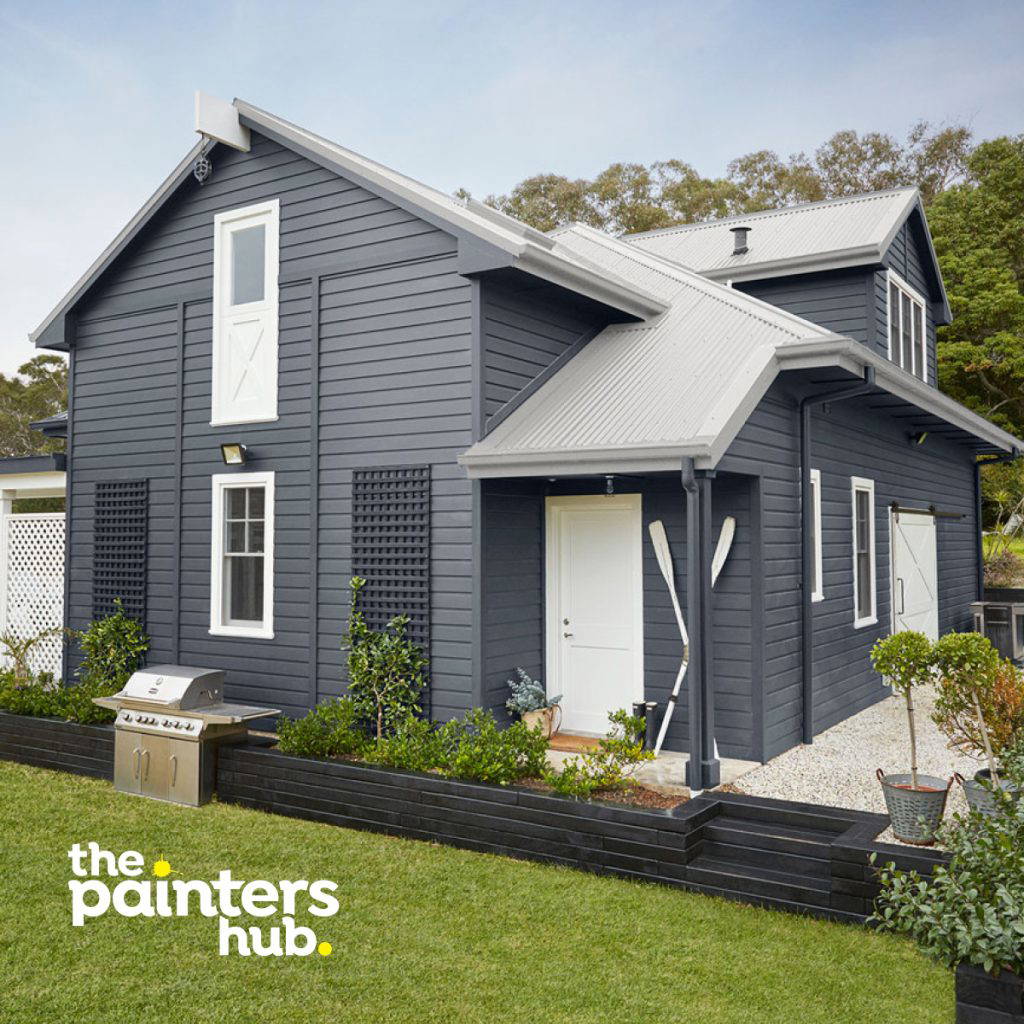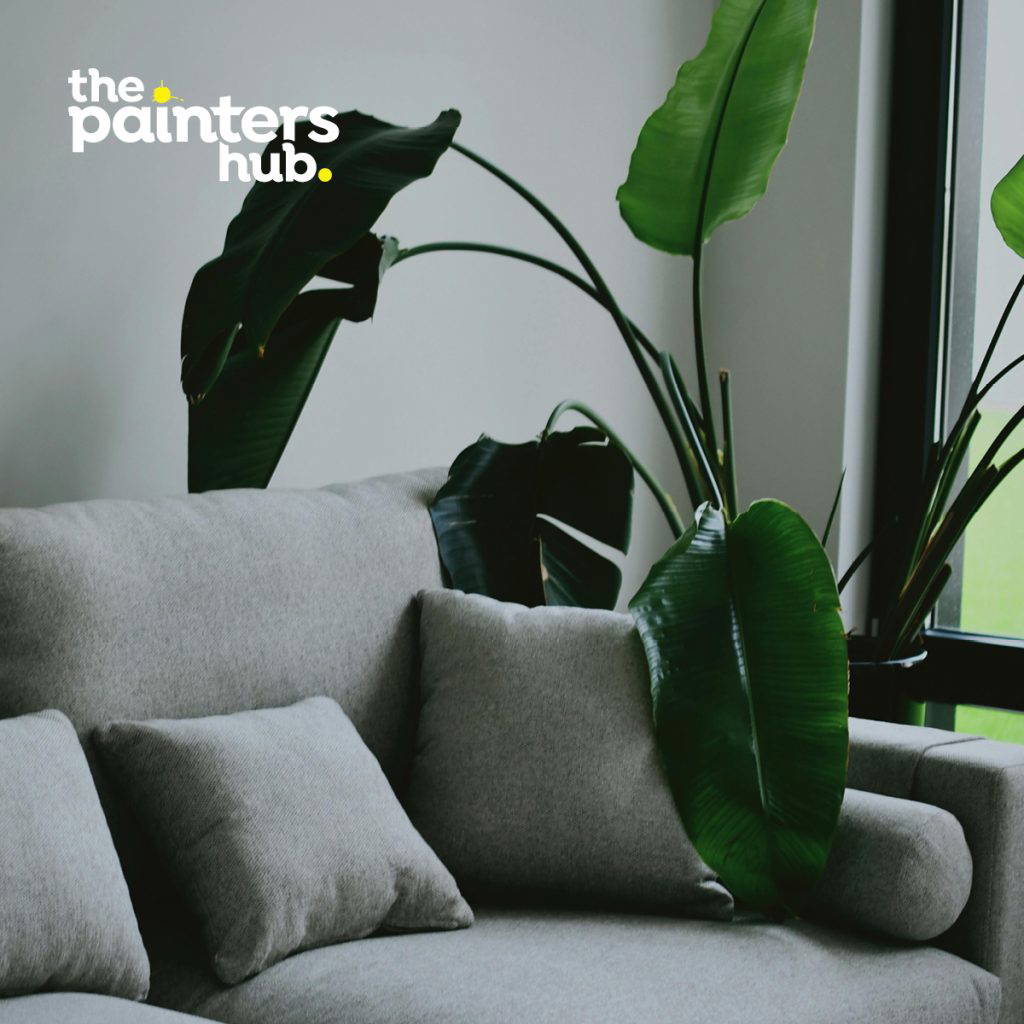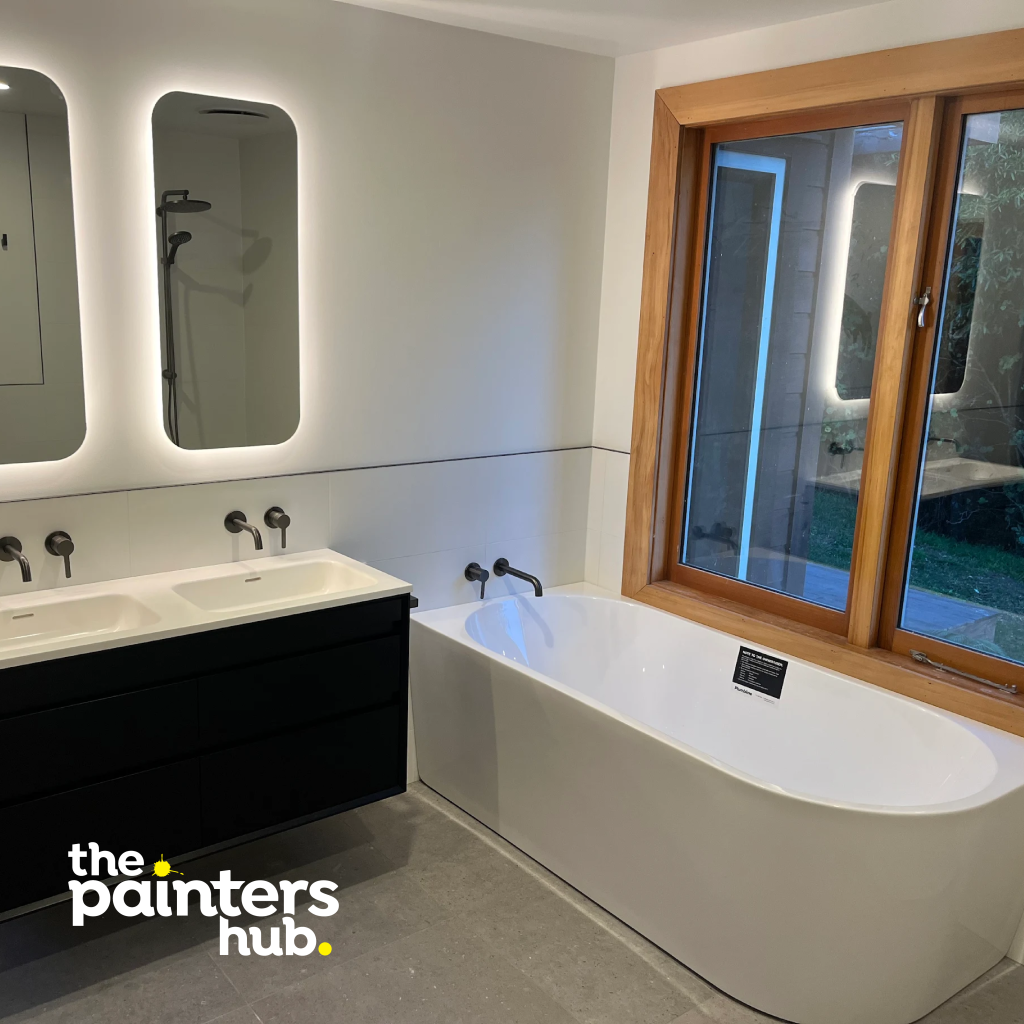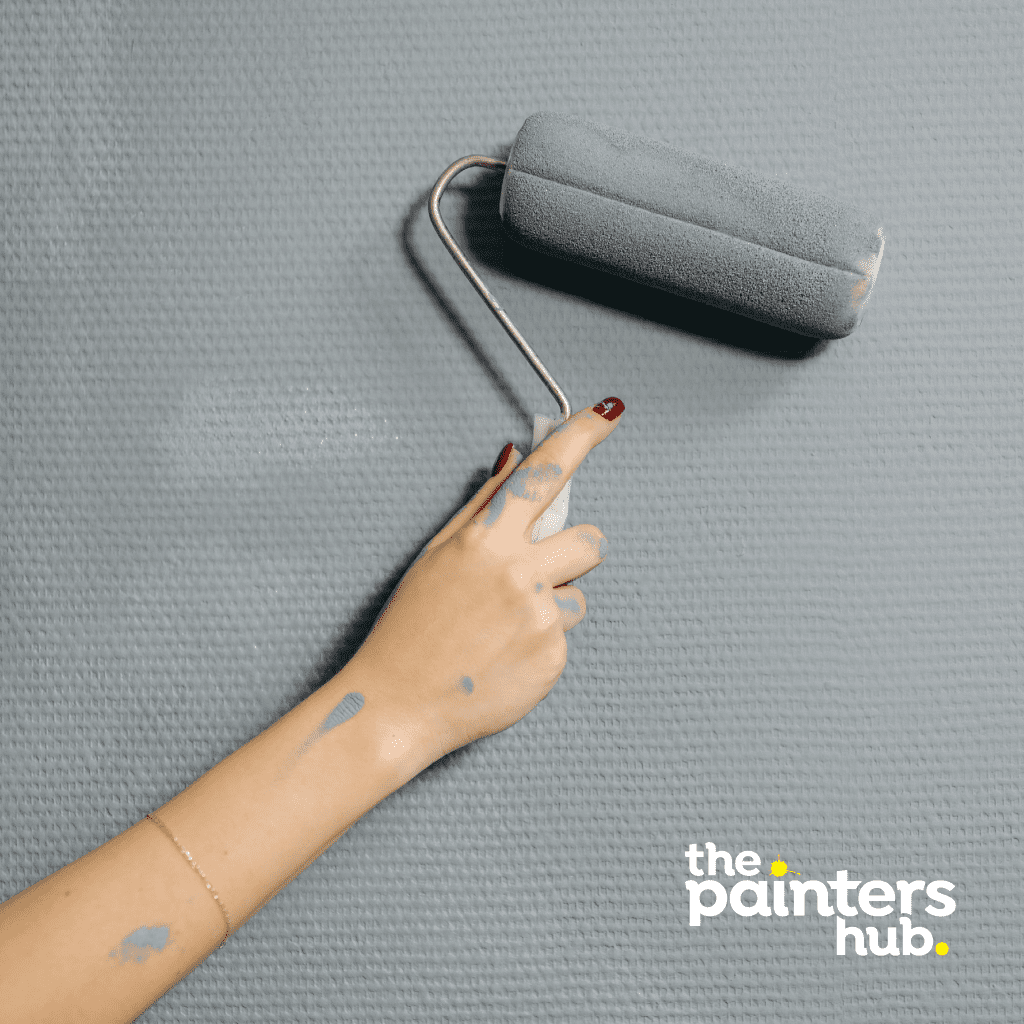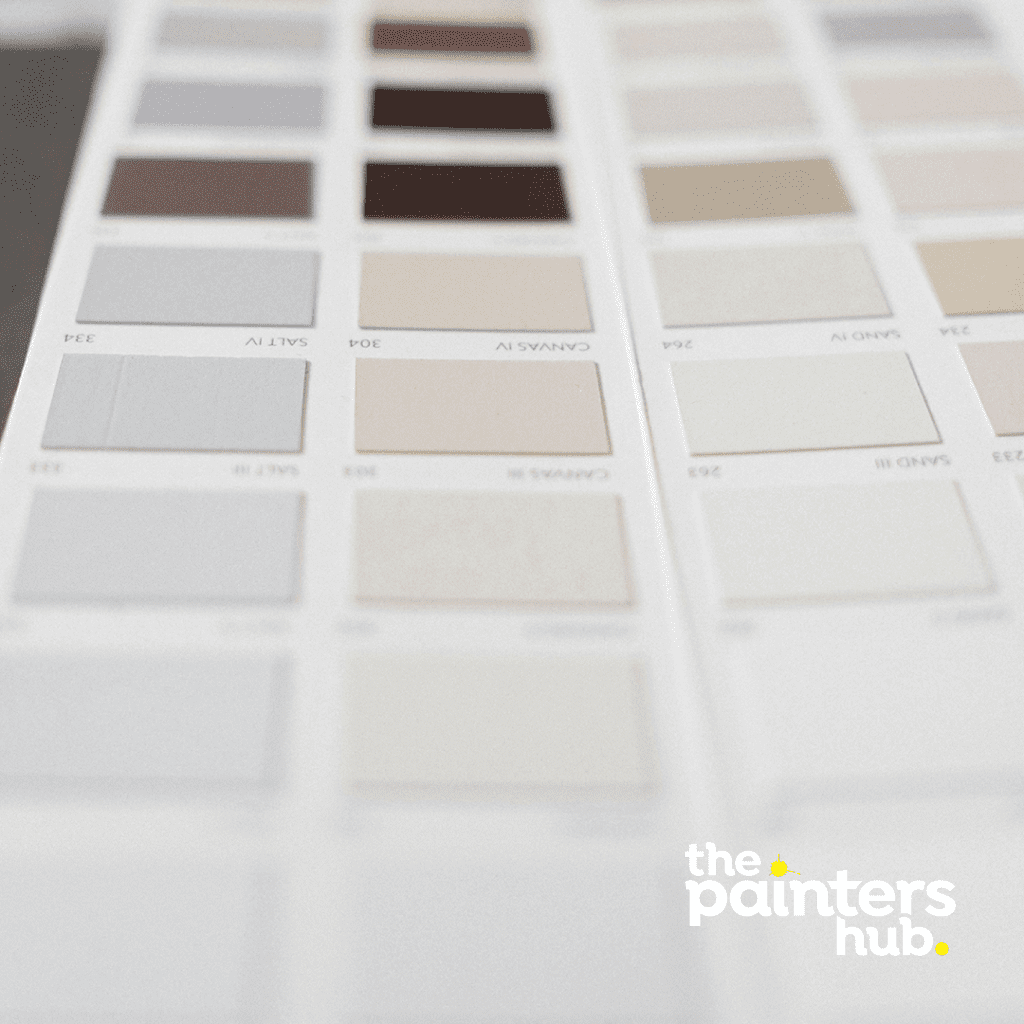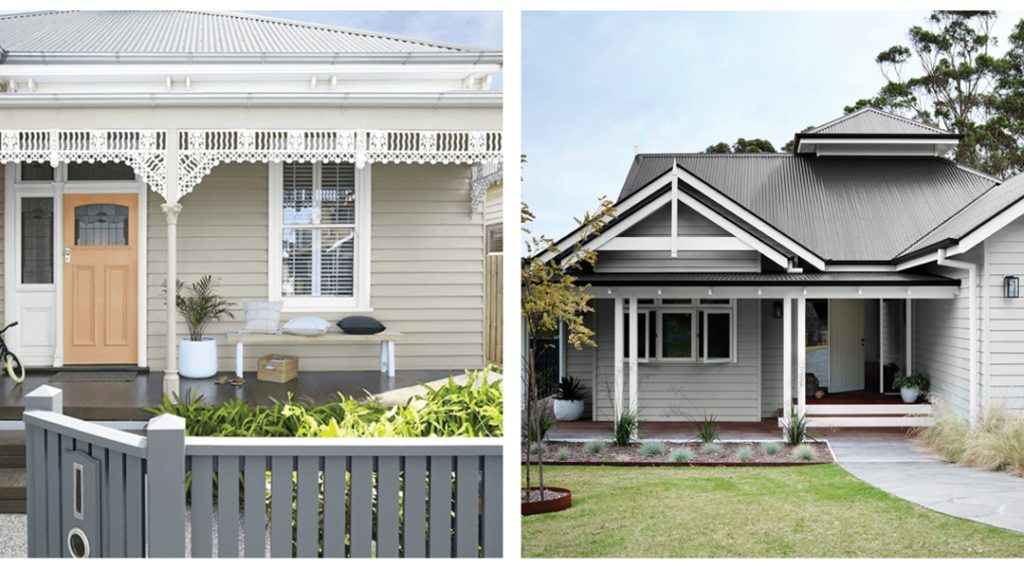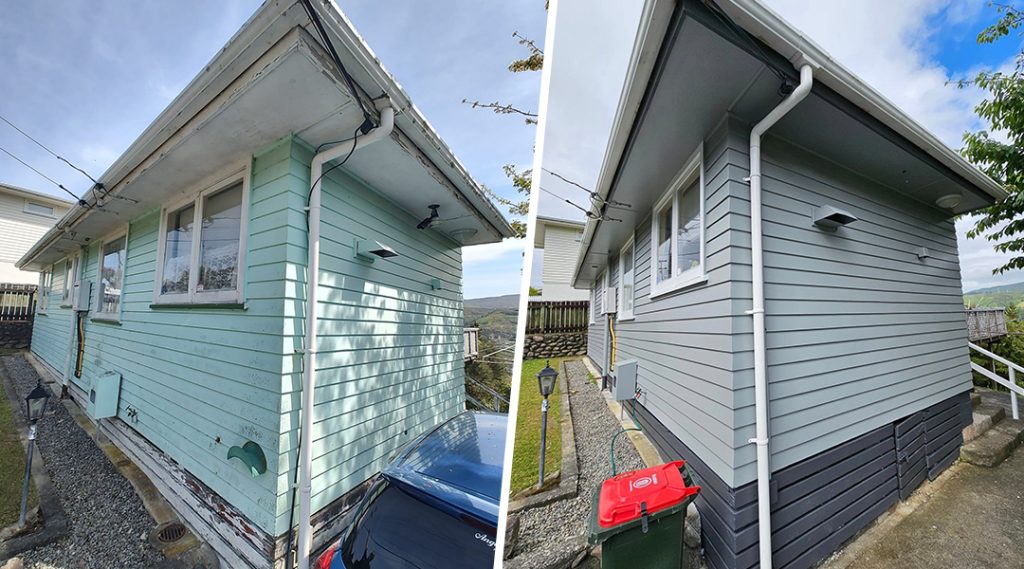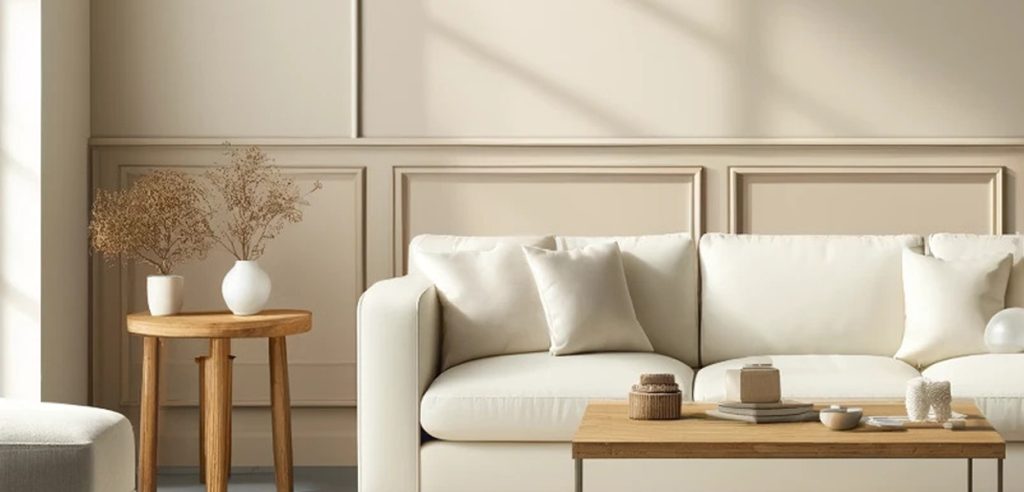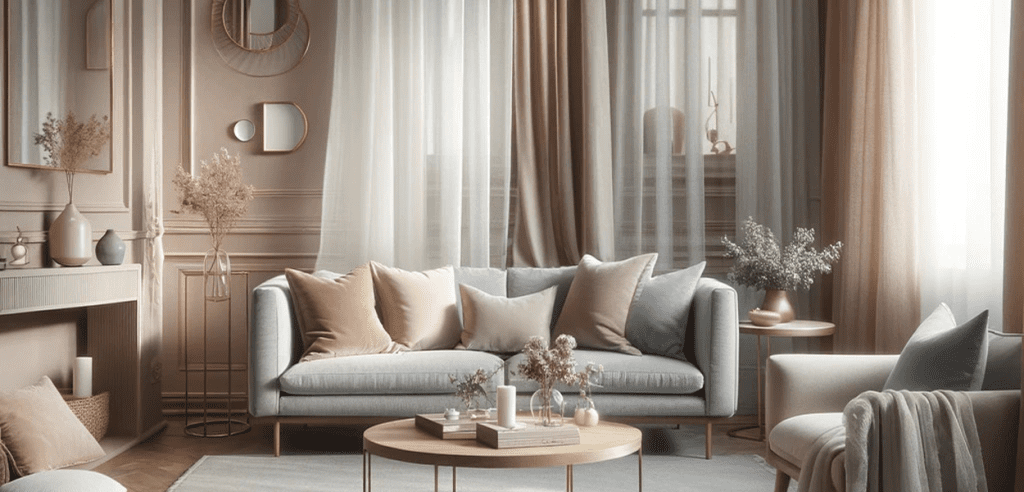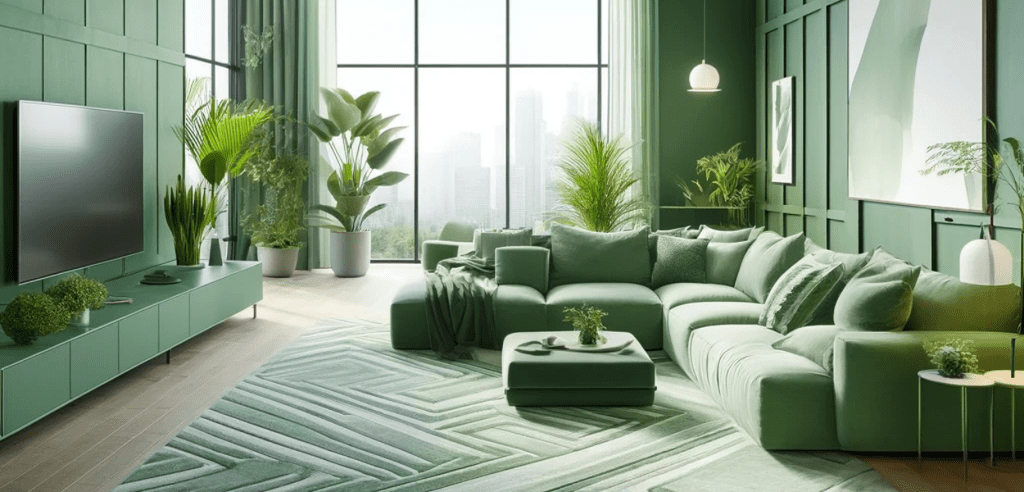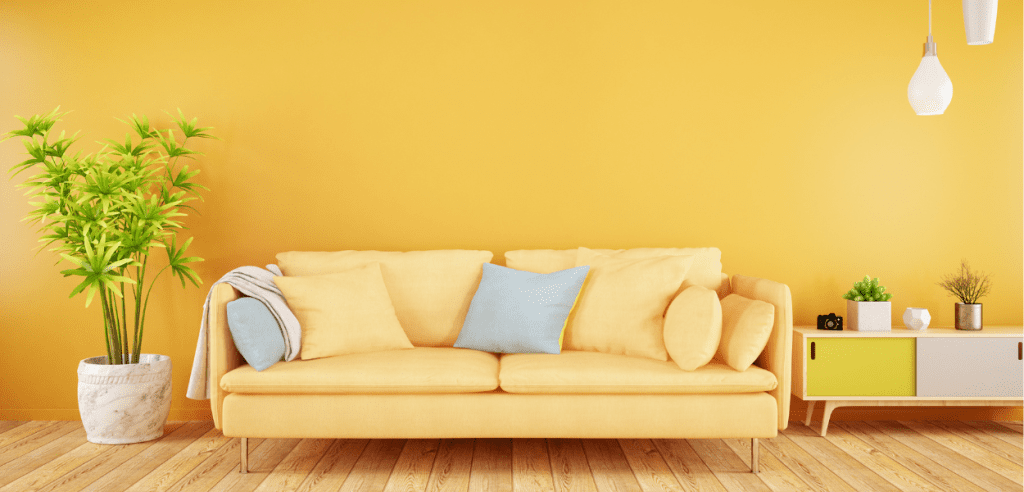How does light effect interior paint?
As interior painters we take light into consideration in several strategic ways to ensure the best outcome for painted walls and ceilings. Here’s how we do it:
1. Colour Selection
Light Preview: We often recommend painting large swatches of a colour on different walls. This will allow you to observe how natural and artificial light affects the colour at different times of the day. This method helps in choosing a colour that looks consistent and appealing under various lighting conditions.
Understanding the Room’s Orientation: Knowing the direction windows face, helps predict how much natural light will influence the colour. For example, north-facing rooms get less direct sunlight, so painters might choose warmer colours to compensate for the cooler, bluish light.
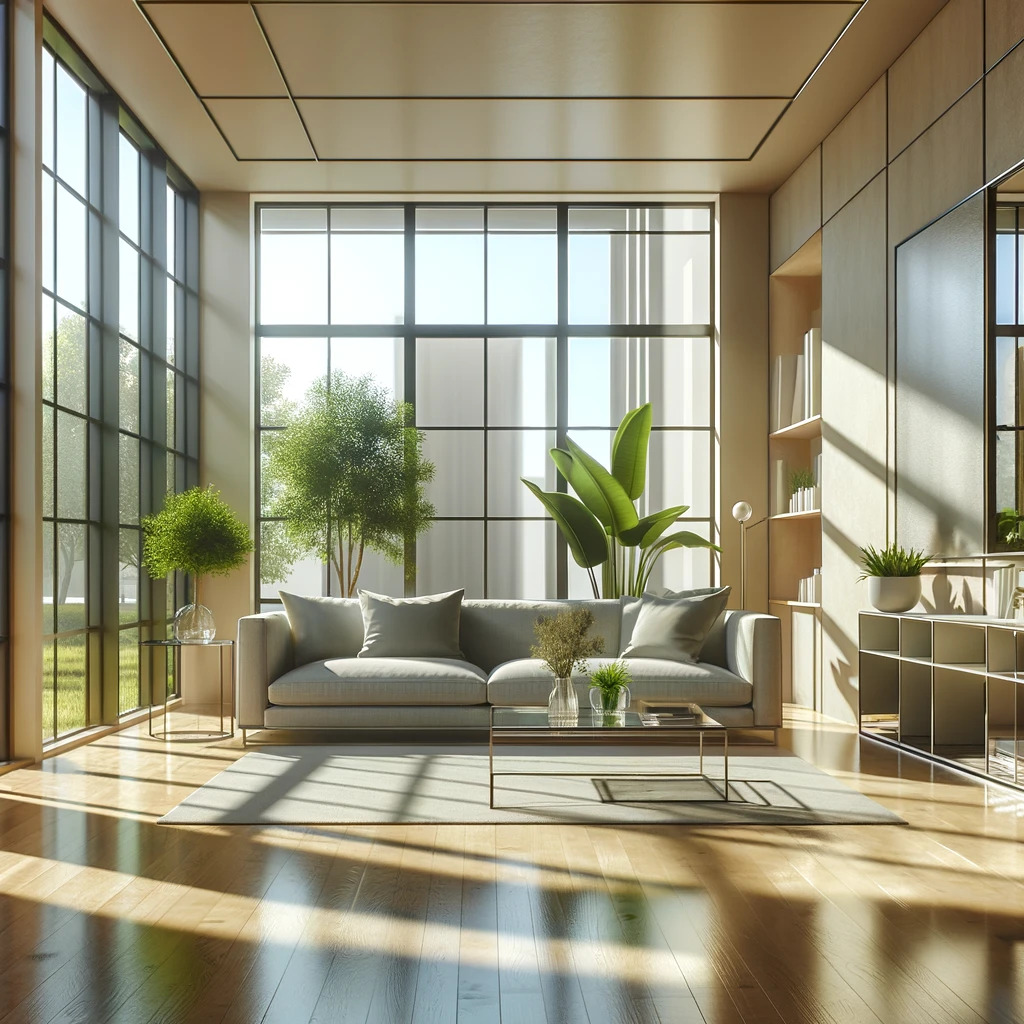
A modern living room where natural light plays a significant role in enhancing the colours. The large windows allow ample sunlight to brighten the space, emphasizing the warm beige wall colour and creating an airy, inviting atmosphere.
2. Interior paint finish and Sheen
Choosing the Right Paint Sheen: Light can highlight imperfections on walls, especially with glossier finishes. The Painters Hub team always consider the room’s lighting when recommending a finish. For example, matte or flat finishes help hide imperfections under bright lights. Whereas glossier finishes are suitable for areas with low light.
Impact of Paint Sheen on Light Reflection: Higher sheen levels reflect more light, which can make spaces appear brighter. We like to use this knowledge to enhance lighting in darker rooms
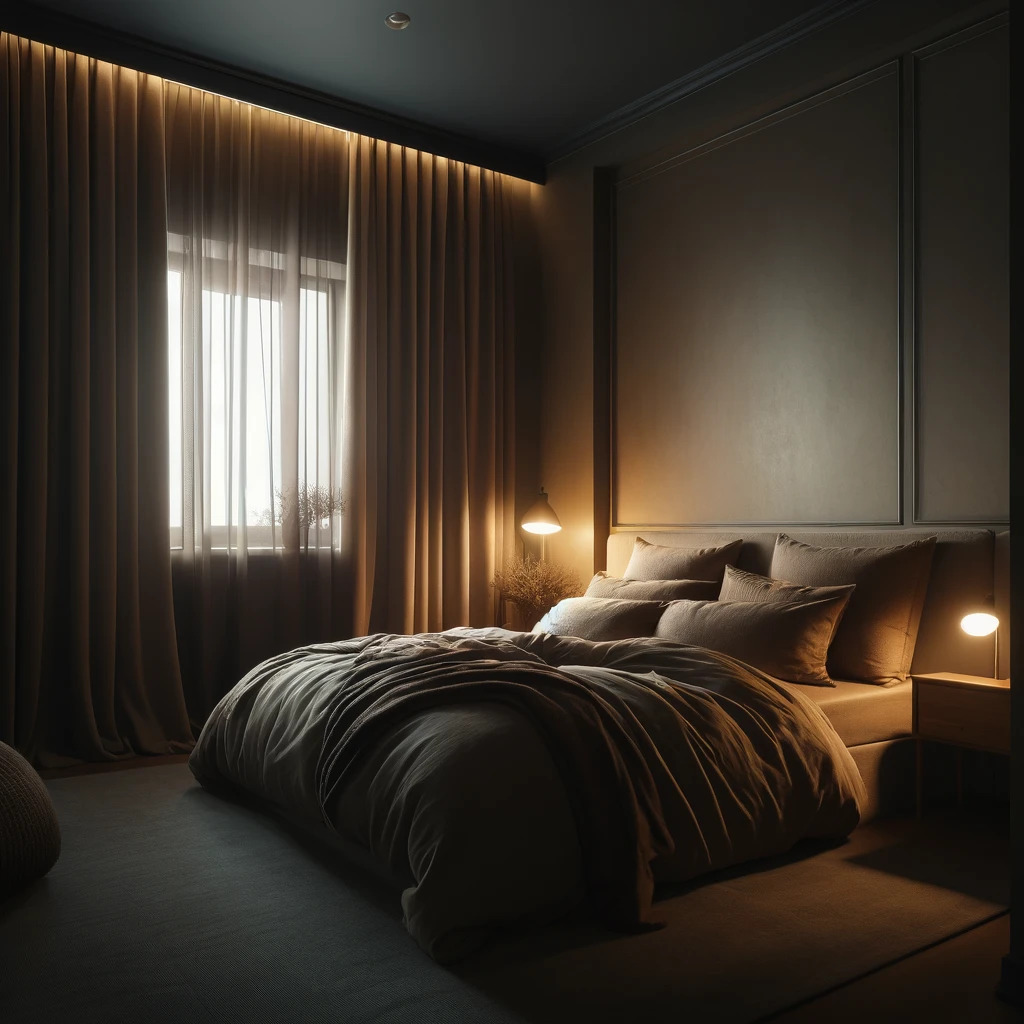
A cozy bedroom with low levels of natural light. The soft, dim lighting in the room enhances the warm, earthy tones of the decor, creating an intimate and serene ambiance that’s ideal for relaxation and sleep.
3. Artificial Lighting
Adjustments for Bulb Types: Depending on whether a room uses LEDs, fluorescent, or incandescent lighting, we may suggest adjustments in paint tones at times. For example, a colour might be shifted slightly warmer if the room predominantly uses LED lights that emit a cooler hue.
Collaboration with Lighting Designers: In some projects, especially in high-end or very specific designs, The Painters Hub often work alongside lighting designers. This is to ensure that the lighting and paint colours complement each other perfectly.
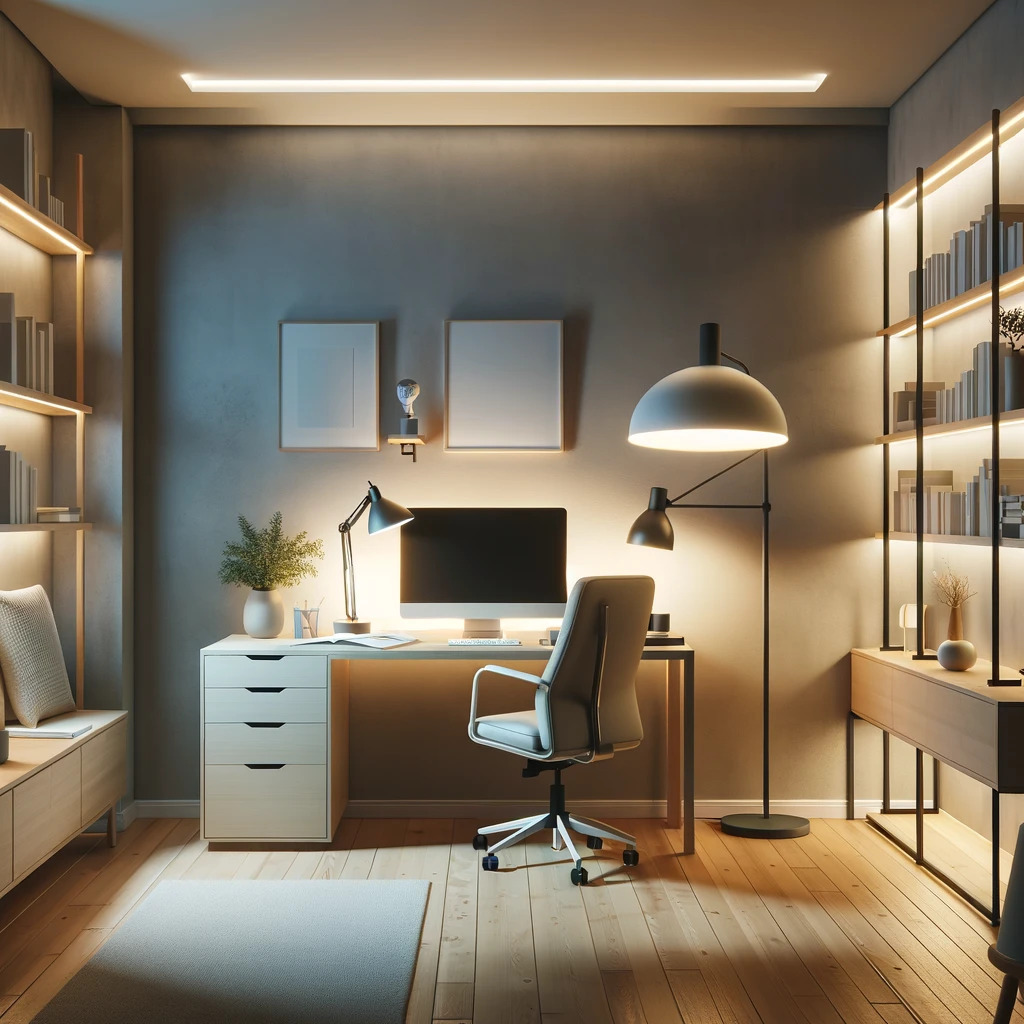
A study room designed with effective artificial lighting creating a focused and comfortable environment for work or study. The light, neutral-toned walls and modern furniture enhance the productivity and comfort of the space.
4. Use of Primers and Undercoats
Enhancing Colour Accuracy: Light-coloured primers can help achieve true colour representation, especially when painting with lighter colours. We use primers and sometimes stain blockers to ensure that the final coat is not influenced by the previous wall colour.
Adjusting for Colour Vibrancy: In cases where vibrant or deep colours are used, a tinted primer might be applied first. This is to enhance the richness of the topcoat and ensure uniformity in different lighting conditions.
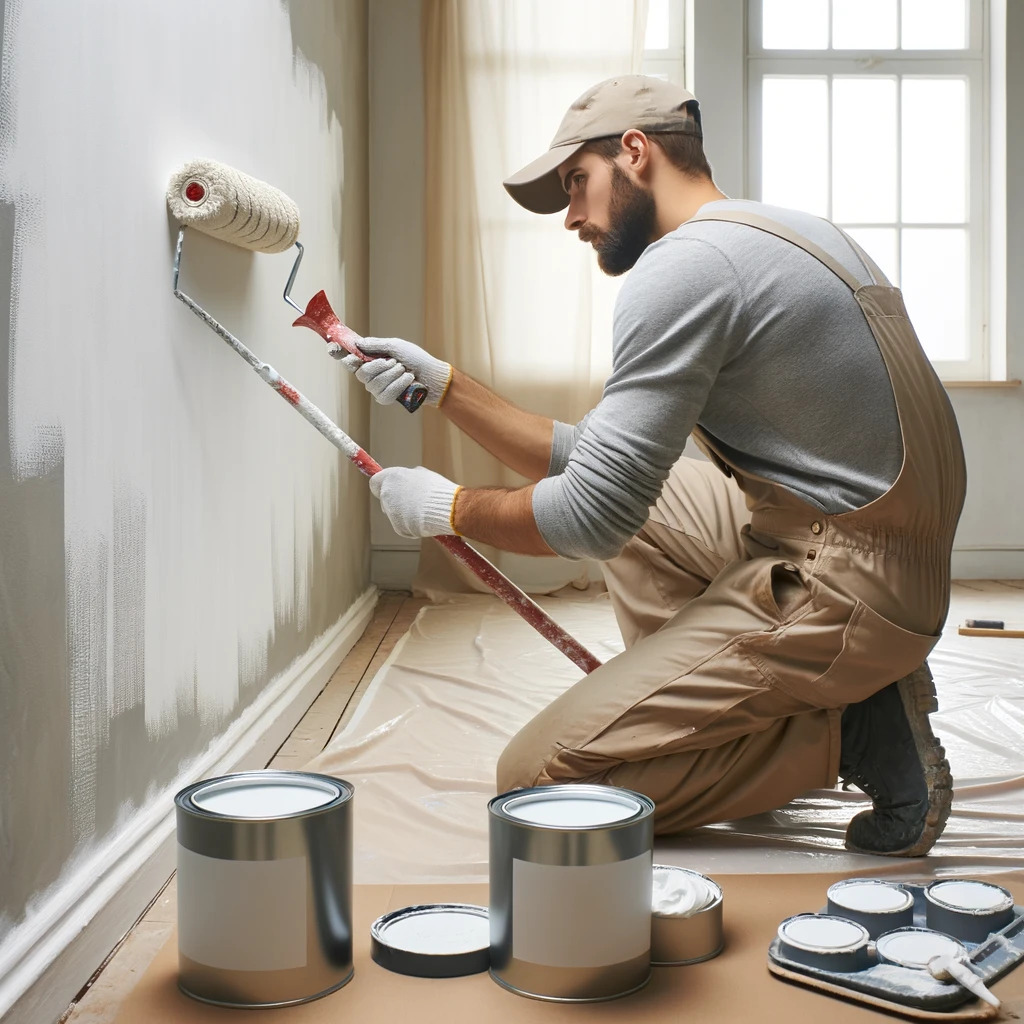
The Painters Hub team at work, applying primer to a wall. This us at the preparation stage in the painting process, this stage is essential for achieving a smooth and durable finish.
5. Testing and Adjustments
Trial and Error: Before finalising the paint, it’s common to apply test patches in various places around the room. This is to see how both natural and artificial lights affect the colour throughout the day.
Consultation and Feedback: The Painters Hub team often consult with clients after the test patches have been viewed under different lighting conditions to decide if adjustments are needed before final application.
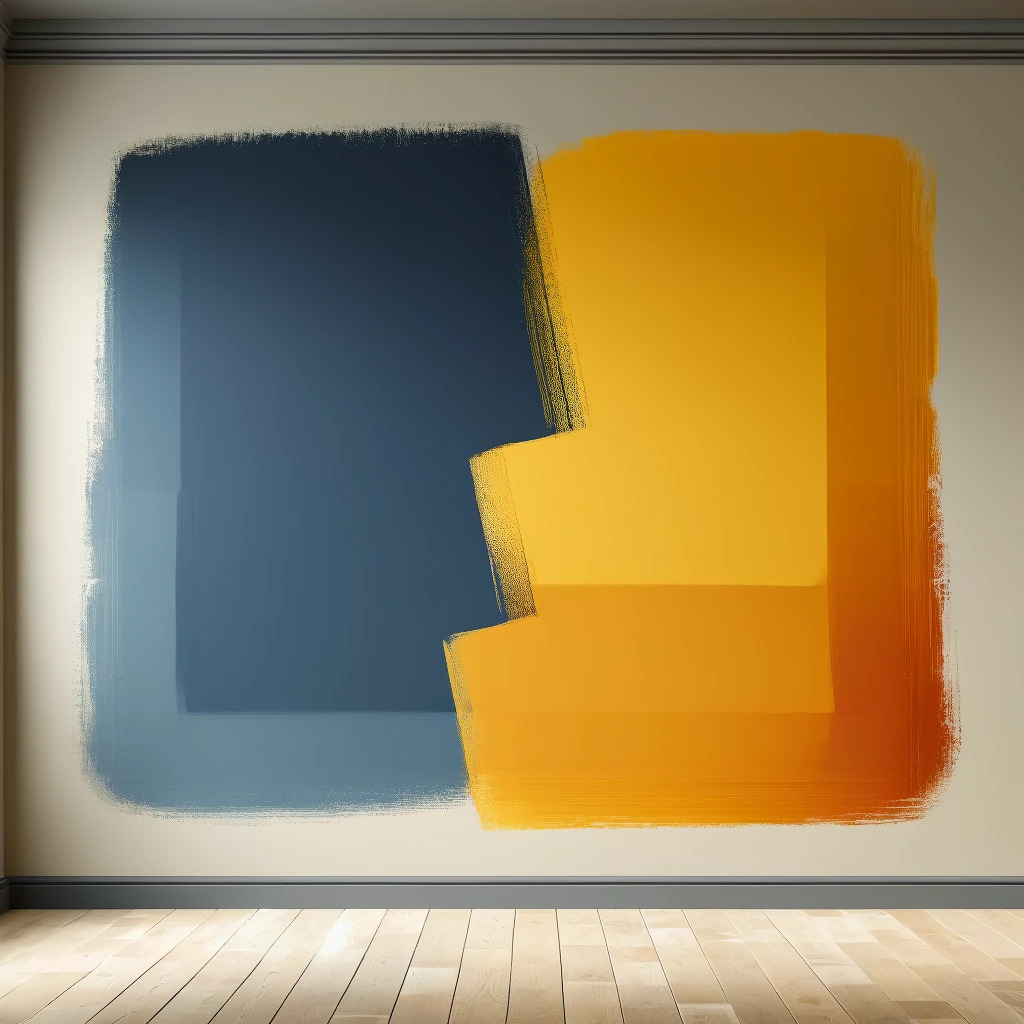
Paint swatches in shades of cool blues and warm yellows. This close-up view shows how the colours appear under different lighting conditions, aiding in the selection process for the perfect paint colour for the space.
By taking these factors into account, our interior painters can effectively use light as a tool to enhance the visual appeal and functionality of painted spaces. This attention to detail ensures that colours perform as expected under different lighting conditions, providing satisfaction with the finished look.
Get in touch with us to discuss your interior project, we’d love to help you get the most out of your space and light!

